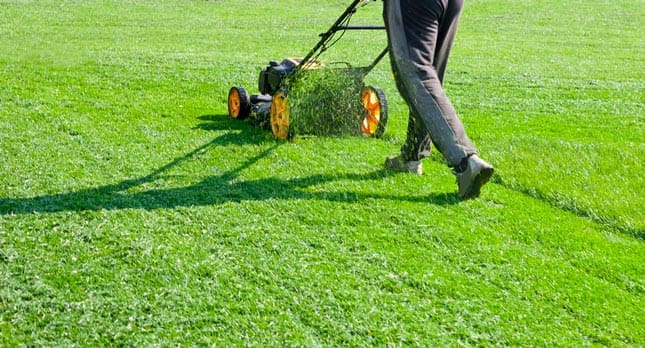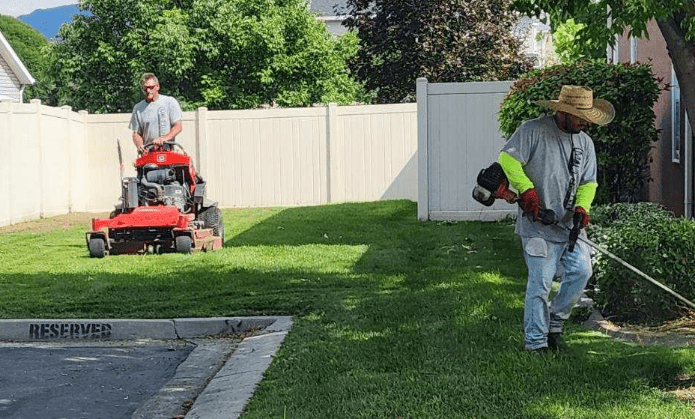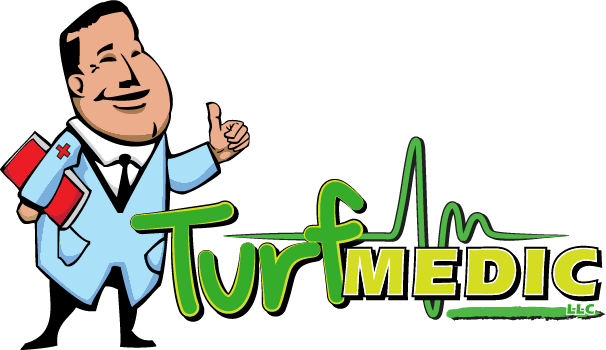You’re standing in your front yard, looking at those stubborn brown patches that seem to multiply every week, while your neighbor’s lawn looks like it belongs on a golf course. You’ve tried the store-bought fertilizers, spent weekends pulling weeds, and watched countless YouTube videos about proper mowing techniques. Yet somehow, you’re still dealing with the same frustrating lawn problems that make you cringe every time you pull into your driveway.
We understand this struggle because we see it every day in Greencastle and throughout the Pennsylvania-Maryland border region. Homeowners invest hundreds of dollars and countless hours trying to achieve that thick, green lawn they’ve always wanted, only to find themselves googling “lawn service cost” at 11 PM after another failed DIY attempt. The truth is, most homeowners have no idea what professional lawn care actually costs or what they should expect to pay for real results.
This guide breaks down exactly what lawn services cost, what factors affect pricing, and most importantly, what you actually get for your investment. We’ll help you understand whether professional lawn care fits your budget and how to make the best decision for your property. By the end, you’ll know exactly what to expect when you start getting quotes and how to spot the difference between a bargain and a smart investment.
Average Lawn Service Cost Breakdown by Service Type
Understanding the different types of lawn services and their costs helps you build a realistic budget for your property. Here’s what most homeowners can expect to pay for common services in our area:
- Basic lawn maintenance: $30-80 per visit (mowing, edging, cleanup)
- Fertilizer and weed control programs: $300-800 annually (4-6 seasonal applications)
- Pest control and disease treatment: $150-400 per treatment
- Core aeration: $250-350 for average residential lawns
- Overseeding: $200-300 depending on seed type and coverage
Fertilizer and weed control programs represent the core of professional lawn care, running anywhere from $300 to $800 annually for most residential properties. These programs typically include 4-6 applications throughout the growing season, each one timed specifically to address what your lawn needs at that moment. We’ve found that most homeowners in the $75,000-$150,000 income range invest between $400-600 annually for comprehensive fertilizer and weed control, which breaks down to roughly $65-100 per application.
Specialized treatments like pest control, disease management, and grub prevention usually cost $150-400 per treatment, depending on the severity of the problem and size of the affected area. Seasonal services such as aeration and overseeding typically range from $200-600, with core aeration averaging $250-350 for most residential lawns and overseeding adding another $200-300 depending on the seed type and coverage needed.

Factors That Affect How Much Lawn Services Cost
Property size has the biggest impact on lawn service pricing, but it’s not just about square footage. A quarter-acre lawn with lots of flower beds, trees, and obstacles takes significantly more time and precision than a simple rectangular yard of the same size. We’ve seen properties that look similar from the street require completely different pricing because one has challenging terrain or requires special equipment access.
Your geographic location within the Pennsylvania-Maryland region affects costs due to local competition, cost of living, and specific environmental challenges. Areas with clay soil, for example, often require different treatment approaches and may need more frequent aeration. Properties dealing with specific regional pests or soil pH issues common to our area might need specialized treatments that affect overall pricing.
The current condition of your lawn plays a huge role in determining costs, especially in the first year of professional service. A lawn that’s been neglected or has significant weed, pest, or disease problems will require more intensive initial treatments to get back to health. Conversely, a relatively healthy lawn that just needs consistent maintenance will cost less to maintain from the start.
DIY vs Professional Lawn Care: True Cost Comparison
The hidden costs of DIY lawn care add up faster than most homeowners realize. When you break down the real expenses and time investment, the numbers often surprise homeowners:
DIY Hidden Costs:
- Fertilizers, weed killers, and pest control products: $200-400 annually
- Equipment purchase or rental: $100-300 annually
- Time investment: 15-25 hours annually (valued at $225-500 if outsourced)
- Mistakes and do-overs: $100-200 annually on average
Time investment becomes a major factor when you calculate the real cost of DIY lawn care. Most effective lawn treatments require multiple applications throughout the year, each one timed precisely based on weather conditions, soil temperature, and plant growth cycles. We estimate that achieving professional-level results through DIY methods requires 15-25 hours annually, not including the time spent learning proper techniques and troubleshooting problems.
The long-term financial impact often favors professional service when you consider property value and the cost of fixing major lawn problems. A well-maintained lawn can add 5-10% to your property value, while a neglected lawn can actually hurt your home’s appeal to potential buyers. Professional lawn care also prevents costly problems like having to replace large sections of grass due to pest damage or improper treatment application.
How to Choose the Right Lawn Service for Your Budget
Before getting quotes, determine what specific problems you want solved and what your realistic expectations are for your lawn. Some companies focus on basic maintenance while others specialize in comprehensive lawn health programs. Understanding whether you need simple mowing services or full fertilizer and pest control programs helps you compare quotes accurately and avoid paying for services you don’t actually need.
Quality lawn service companies provide detailed explanations of their treatment programs, timing schedules, and what results you can expect at different price points. Key questions to ask potential lawn service providers include:
- What specific treatments are included in each service package?
- What guarantees do you offer if treatments don’t work as expected?
- How do you handle weather delays or rescheduling?
- What are your technicians’ qualifications and training requirements?
Be cautious of pricing that seems too good to be true, especially if it’s significantly lower than other local companies. Extremely low prices often indicate corners being cut on product quality, application rates, or service frequency. Similarly, be wary of companies that require large upfront payments or pressure you to sign long-term contracts without giving you time to research and compare options.

What You Get for Your Money with Professional Lawn Care
Professional lawn care companies use commercial-grade products that aren’t available to homeowners, often at concentrations and formulations specifically designed for our regional growing conditions. These products typically work more effectively and last longer than store-bought alternatives. We use professional equipment that applies treatments more evenly and efficiently than handheld sprayers or broadcast spreaders most homeowners have access to.
Expert timing and knowledge make a significant difference in treatment effectiveness. Professional lawn care technicians understand soil temperature requirements, optimal weather conditions for different treatments, and how to adjust application rates based on current lawn conditions. This knowledge comes from years of experience and ongoing training that most homeowners simply don’t have access to or time to develop.
The long-term lawn health benefits of professional service extend beyond just appearance. Properly timed fertilizer applications strengthen grass roots, making your lawn more drought-resistant and better able to compete with weeds naturally. Professional weed control programs target problems before they become visible, preventing the cycle of playing catch-up that frustrates most DIY lawn care attempts.
Conclusion
Understanding lawn service costs helps you make an informed decision about whether professional care fits your budget and goals. The most effective top lawn treatment services include fertilizer and weed control programs ($300-800 annually), core aeration ($250-350), overseeding ($200-300), and specialized pest control treatments ($150-400 per application). Most homeowners in our area invest $400-800 annually for comprehensive programs, which often costs less than unsuccessful DIY attempts while delivering significantly better results. When you factor in the time, frustration, and hidden costs of DIY lawn care, professional service often represents both a better value and a better outcome for busy homeowners who take pride in their property.
If you’re ready to stop fighting with your lawn and start enjoying it, we’d love to help you understand exactly what professional lawn care would cost for your specific property. Contact us today for a free consultation and personalized quote that takes into account your lawn’s current condition, your goals, and your budget. Professional lawn care isn’t just about achieving a better-looking lawn – it’s about reclaiming your weekends, protecting your property value, and finally getting the results you’ve been working toward.

Recent Comments